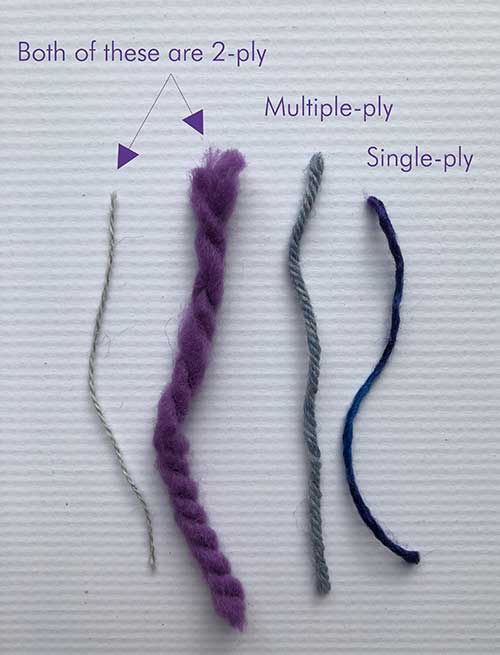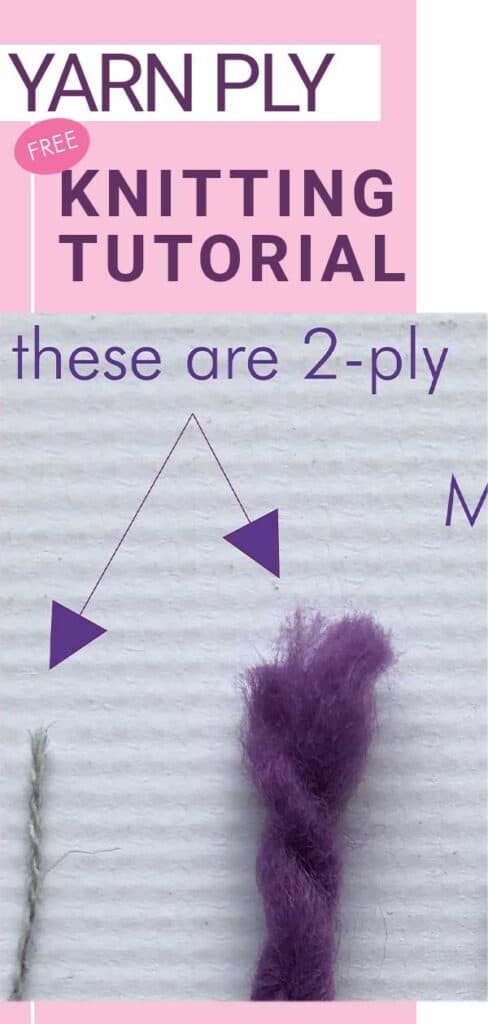Yarn Ply is one of the best kept secrets in knitting. Most people don’t know a lot about ply (unless they’re also a spinner). Learn a bit more about this important feature in your yarn.

Before we get started, it’s good for you to know that this phrase – yarn plies – can actually mean two different things.
What does Ply actually mean?
If you speak to a person from the United States, yarn ply will refer to the number of strands of yarn that make up the final yarn.
In some other countries, it doesn’t refer to the number of strands. It’s really describing the yarn weight. As an example, you may hear that a yarn is described as “4 ply”. This may have nothing to do with the number of strands and it, instead, can be another way to describe a fingering weight yarn.
We, at Knotions, will not use this term in this way. But, it’s good for you to know that it exists so you’re not confused.
Ply – if it’s not really twisted?
What do I call it?
If the yarn isn’t twisted and it doesn’t look like rope, it’s what we call a “single” or “single ply”.
Ply – does it look like rope?
What do I call it?
If the yarn is made up of multiple strands, then it can be one of many types of plies. A couple possibilities are:
- Cable ply
- Navajo ply or Chained ply
Why Do I Care about multiple strands?

In general, the strands used in a yarn can impact several factors.
Don’t fight the things that your yarn does naturally. Even if you “get it” to do what you want, it will likely go back to its more-natural state.
A few of the attributes that ply can impact are its:
- Strength
- As the plies increase, so does the strength. Meaning, a single yarn won’t be as strong as a 3-ply yarn – regardless of its weight. You can often pull at a single and tear it.
- A single tends to be a bad choice for hard-wearing items such as socks or mittens, but it can shine in either a scarf or shawl.
- Stitch definition
- Generally, you’ll get better stitch definition from a multiple of plies.
- Roundness
- The more plies you have, the rounder the yarn is.
- A 2-ply yarn will often flatten out if it’s used with ribbing or cables. In stockinette, it can be more textured than other plies.
Ply and Gauge
If you’re having a challenging time achieving a certain gauge, it might be the ply (and not you!).
Common Uses for Certain Plies
- Single Ply: Better for knitting that isn’t used in very hard situations.
- Two Ply: Often used in lace.
- Three or more Plies: Good for cables, socks and other places where stitch definition and strength are important.
You might wonder where colorwork falls in this list. There are pros and cons for all three, and it really depends on what’s important for you for the situation. As always, I suggest knitting a swatch first so you can see it in action.
Other things about Ply
There are many other things that can be considered about Ply, but we won’t touch on them for a Knitting 101 primer. If you’re interested in delving deeper into Ply, here are a few resources for you:
- https://yarnsub.com/articles/ply-structure
- https://www.britannica.com/topic/textile/Types-of-yarn
- https://en.wikipedia.org/wiki/Plying






Leave a Reply